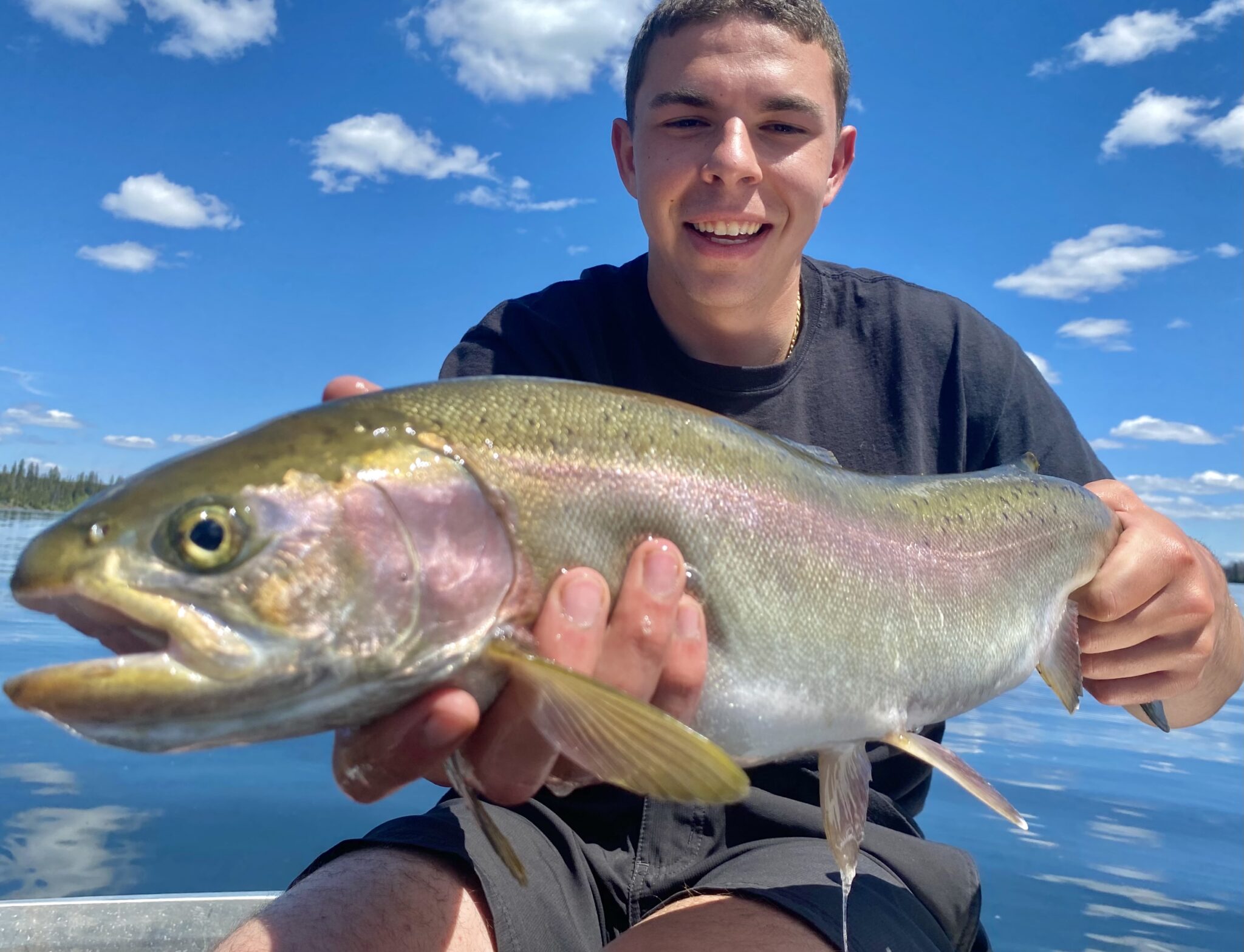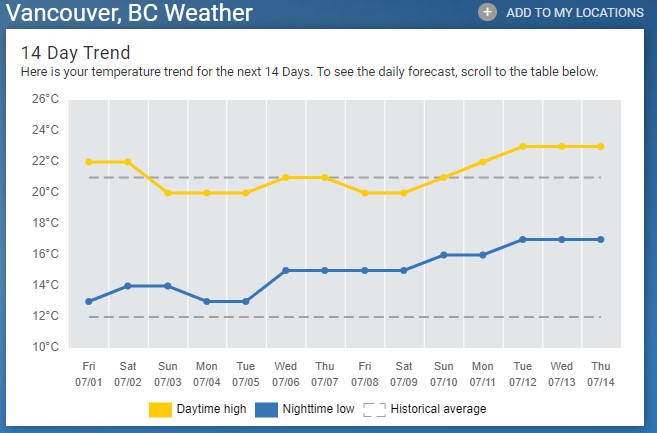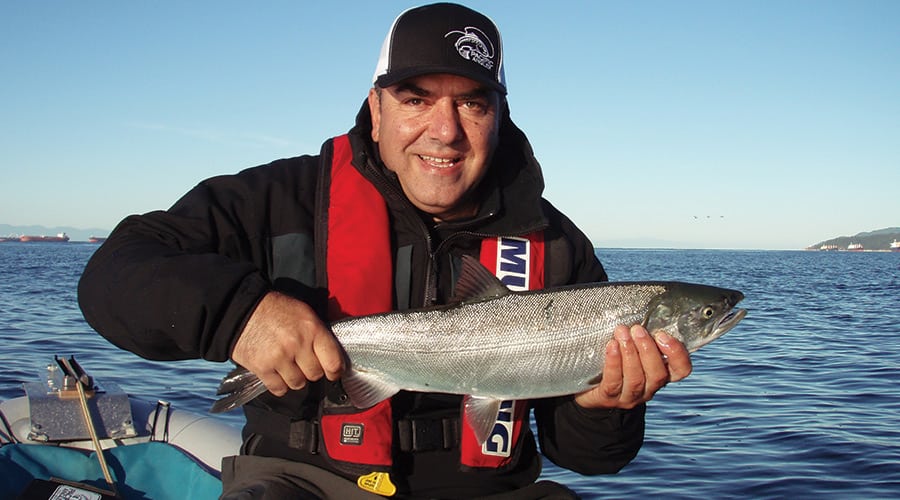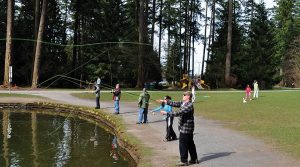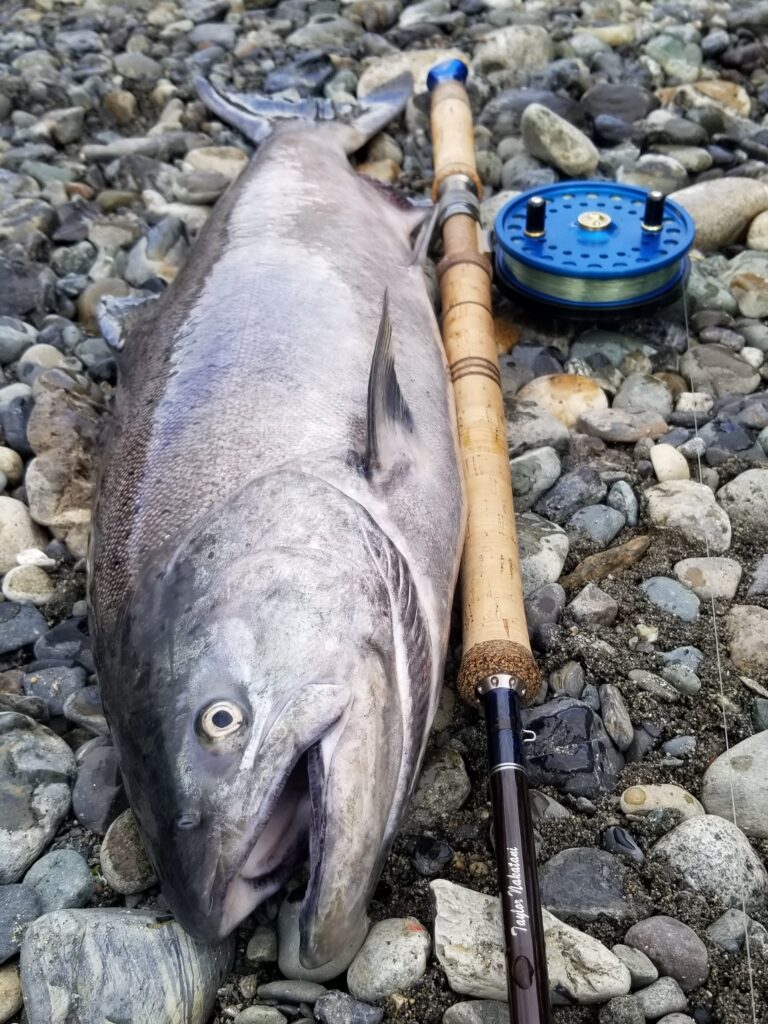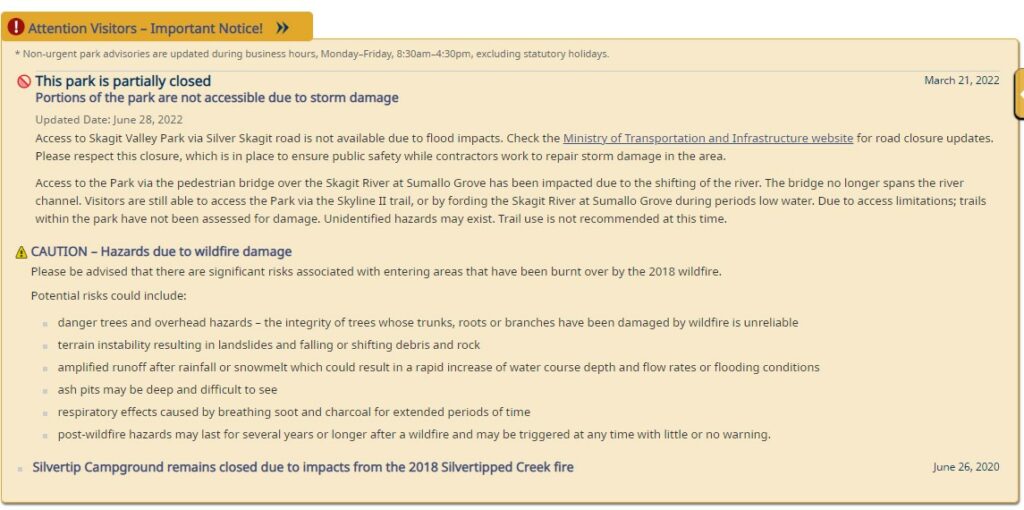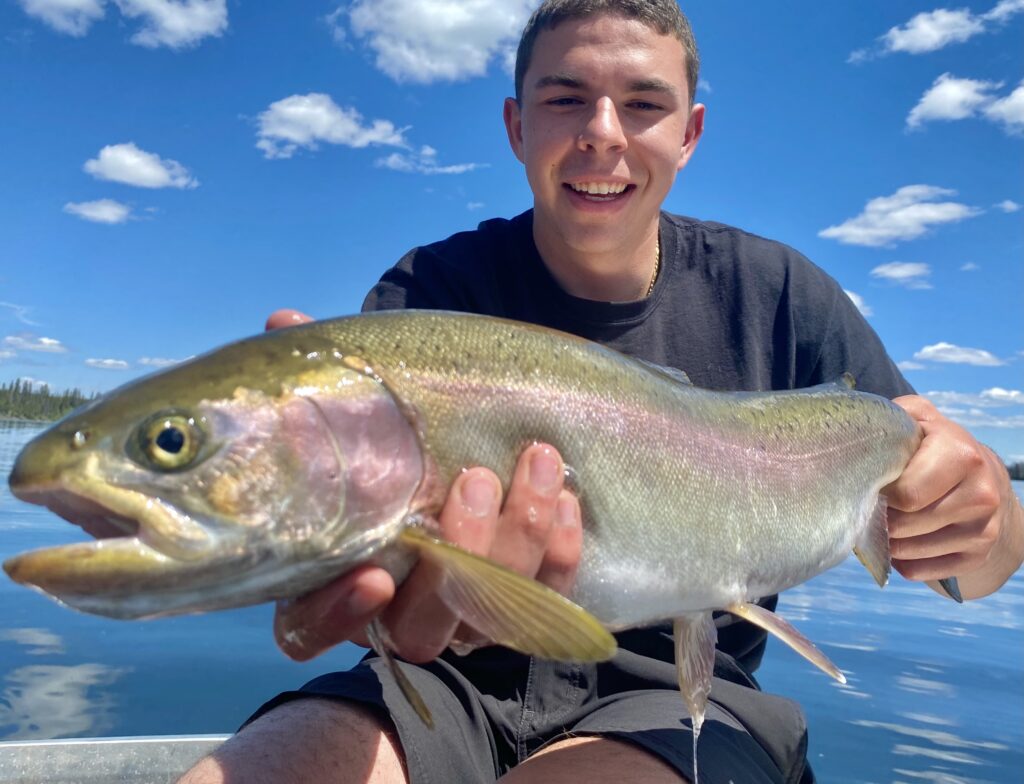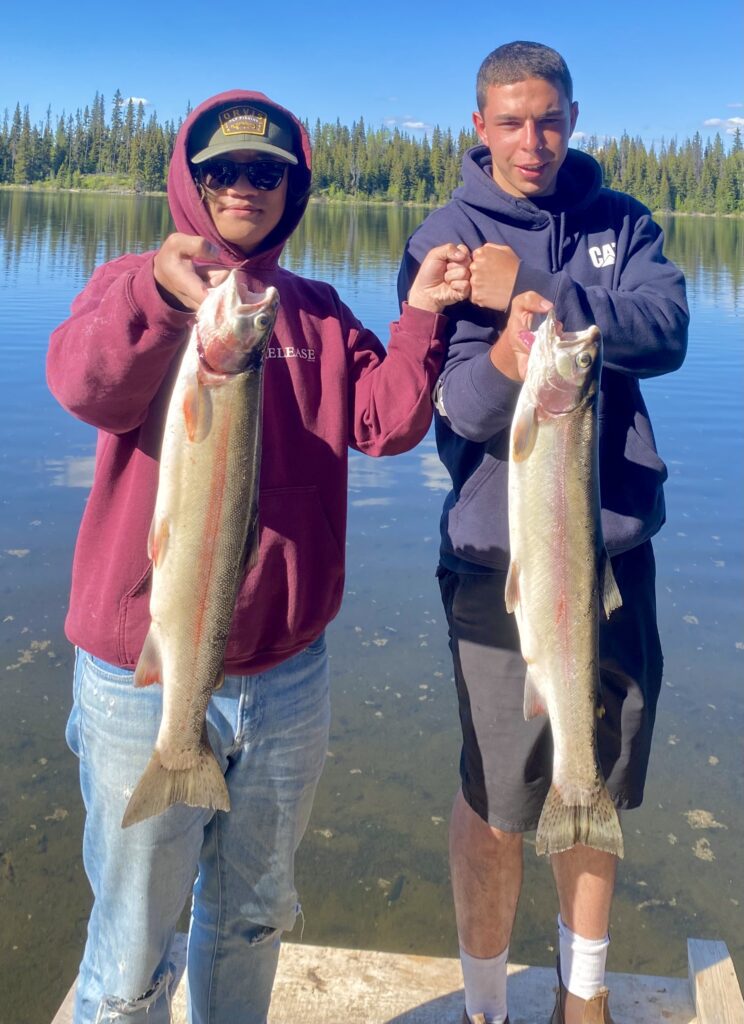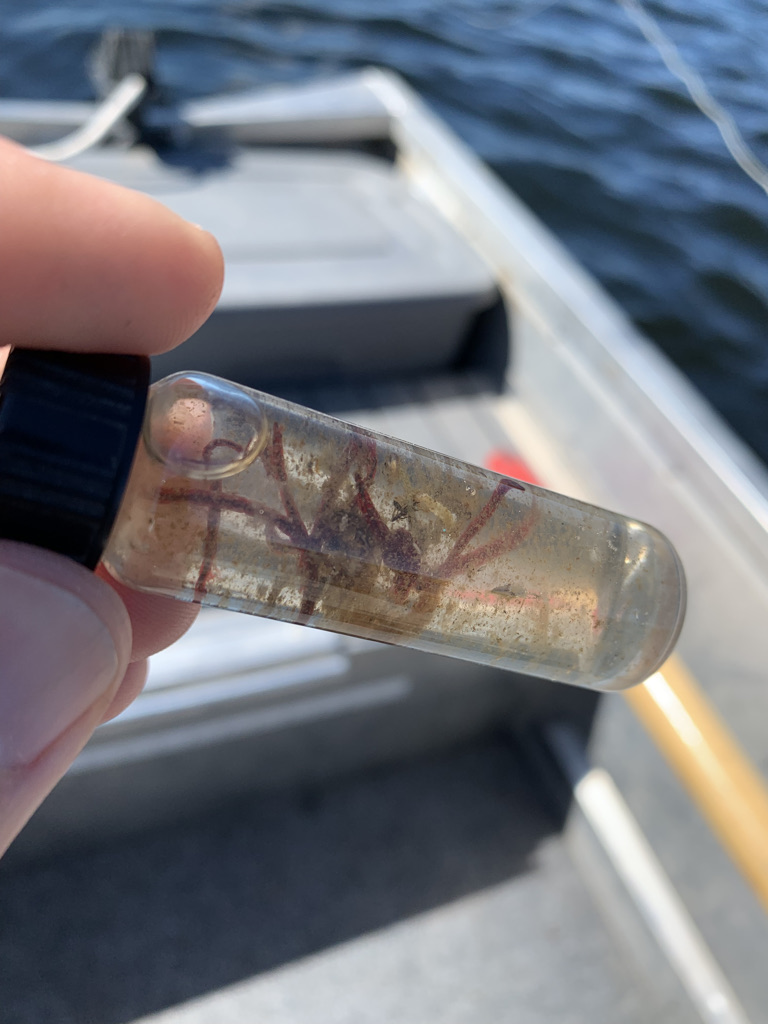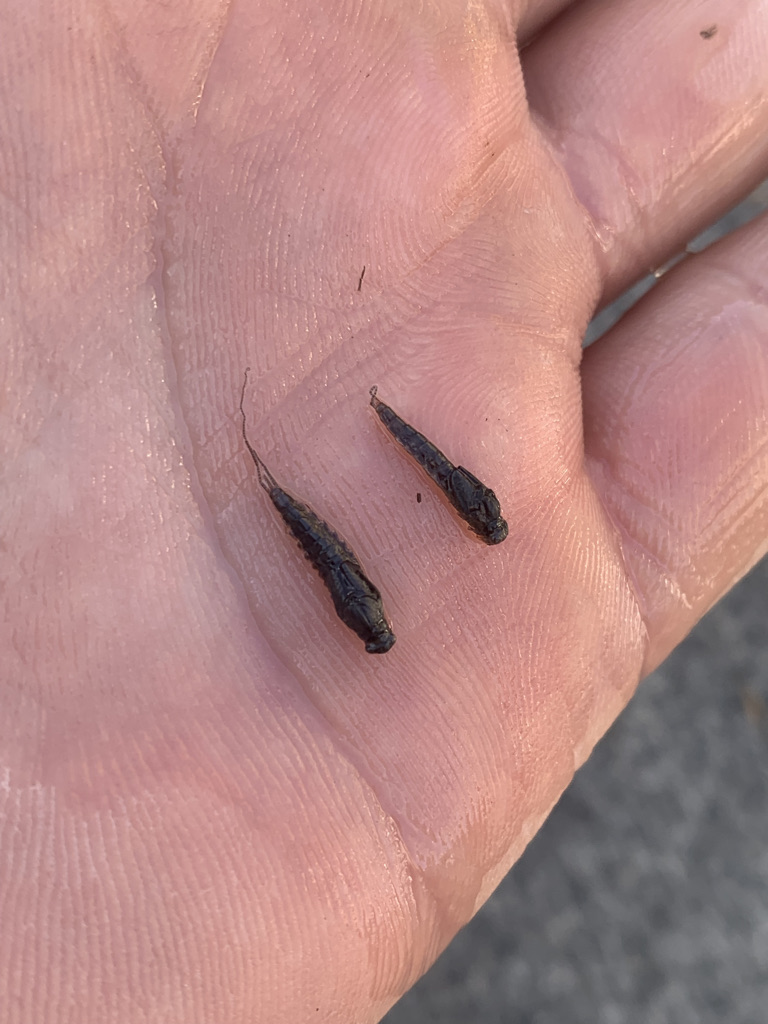OUTLOOK
Happy Canada Day Everyone! Happy Canada Day! We hope everyone has some time this weekend to enjoy the great Canadian outdoors. We have good weather for today and Saturday but will see some rain Sunday through Tuesday. We have good weather for today and Saturday but will see some rain Sunday through Tuesday.
There is lots of fishing news this week as well because July 1 marks a number of key turning points in the seasons including openings on a number of rivers.
For those interested in the Skagit we have an update on the Skagit Park access. There is good news on that front but we will also look at water levels across the lower province. The water levels news is not so good and we expect high and challenging conditions for some time on most of our rivers.
We also have some interesting interior lake updates. Gavin and Jason were out over the last week. Both reported very diverse hatches and they talk about a few of their strategies to approach situations when there are tons of different food options for the fish.
Matt also tunes in this week with the video version of the report. He has some interesting updates on saltwater fishing, sockeye, more details on river levels as well as a deeper dive on the access issues facing the Skagit River and a Capilano/beach fishing update. Check that out here:
For those of you reading this report when it was first sent we are open today – Canada Day – until 7PM so there is still time to come on by if you need to grab a few things before heading out this weekend! On to the report!
CLASSES AND COURSES
There is still time to sign up for next week Fly Fishing On Beaches course with Andre. Call the shop today at 604.872.2204 to sign up!
Fly Fishing On Beaches
This single evening 3hr zoom seminar will cover the basic principles needed to be an effective beach fly fishermen in BC from Howe Sound to the east coast of Vancouver Island. Topics covered will include rods, reels, fly lines, flies, tides, and techniques. Andre Stepanian, the instructor for this course, has been chasing salmon on our local beaches for over two decades.
Zoom Seminar Date: July 5, 2022
Time: 6:30pm – 9:30pm
Cost: $50.00 + GST
Introduction To Fly Fishing
This course was specifically designed to give the new fly fisher the basic knowledge, casting skills and fly fishing strategies to effectively fish our local BC waters. This course is comprised of two sessions; 3hr evening zoom seminar and a 3hr casting session.
Dates: Zoom Seminar July 12 & Casting July 17
Cost: $150.00 +GST
Zoom Seminar Time: 6:30pm – 9:30pm
Casting Time(s): 10am – 1pm or 1:30pm -4:30pm
FRESHWATER FISHING REPORTS
Vedder/Chilliwack Fishing Report
If you’re reading this, then it’s July 1st, and that means a couple things- first of all, Happy Canada Day! Secondly, the Vedder/Chilliwack system will be open for fishing as of 12:01am, and so begins the summer fishery. There will be good numbers of “trout” present in the system right away, but most of these “trout” are quite small, averaging less than 12”- this is because they are actually juvenile steelhead. There is some data to support targeting the hatchery juvenile steelhead as they might not leave the river and then will outcompete wild fish. You are allowed to retain four hatchery “rainbows” under 50cm (no minimum length) due to this issue of hatchery fish out competing wild fishing. Larger resident rainbows can be encountered from time to time, most often in the mid-upper stretches of the river, and they can be fun to target on light tackle or fly gear. The one thing we do ask is if you catch wild trout please use the upmost care when releasing them.
The main attraction of this time of year is the summer salmon fishery- the Vedder/Chilliwack gets returns of both summer-run red chinook and sockeye. The sockeye run is very vulnerable and numbers fluctuate dramatically from year to year, so these fish are permanently closed for retention. Sockeye are fragile fish, so improper handling or catch and release practices will result in very high mortality rates- so make sure you’re handling these fish with care if you encounter them. Contrary to popular belief, Sockeye can and do bite, and will often be encountered when targeting chinook- they fight very hard for their size and are a very fun incidental bycatch.
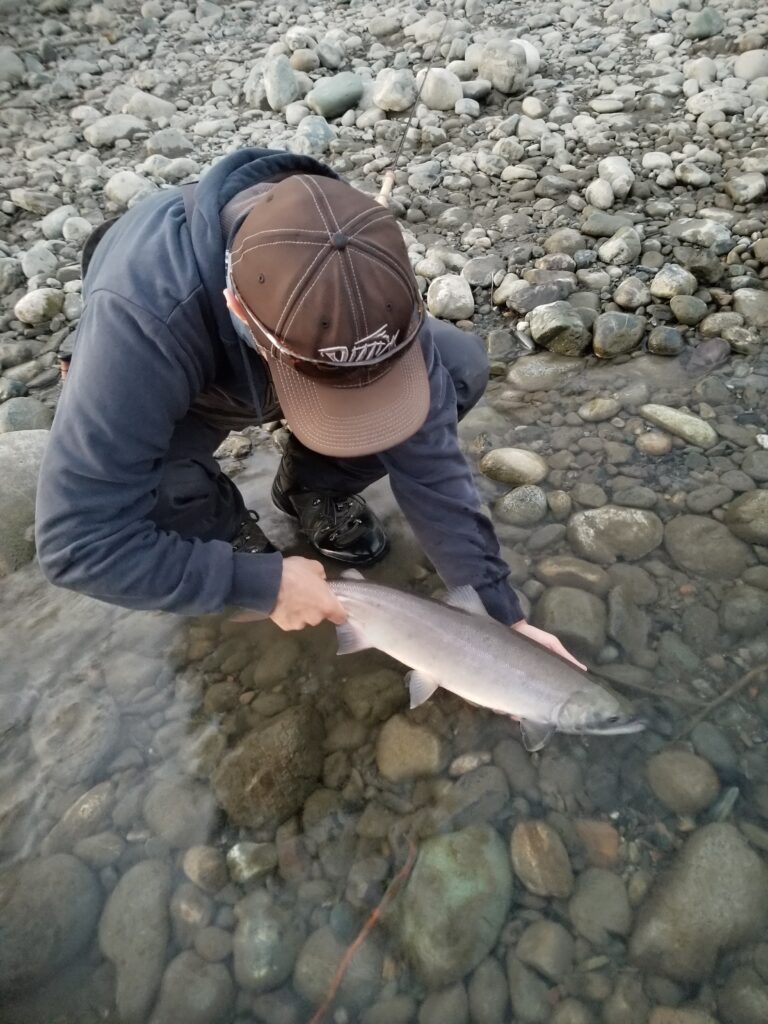
The chinook are the main target, and are most often caught by drifting roe, beads, blades, yarn or jigs. Twitching jigs or swinging spoons/spinners/flies may also produce a couple fish in specific circumstances, but these methods are fairly circumstantial and inconsistent. The summer chinook fight exceptionally hard for their size in my experiences, with these fish often going on huge runs and jumping multiple times in spectacular fashion- as such, they can be tough to land (don’t ask me about how last season went). A medium power rod can get the job done if you’re confident in your ability to do battle with large fish, but a medium-heavy power rod is probably a better idea for most. Heavier mainline isn’t a terrible idea, I run 20lb monofilament on my centerpin, and heavier leaders are recommended- 15-17lb gets the job done in most cases. Levelwind or centerpin reels are ideal for float fishing, but a spinning reel can suffice if the two preferred options are unavailable.
The summer salmon fishery typically starts out quite slow, with relatively few fish being encountered until around the middle of the month. The fishery has historically been a fairly difficult fishery, with relatively few fish returning- both chinooks and sockeye. Last year saw a very noticeable increase in the size of the summer chinook run (although the sockeye run was terrible), which lead to some pretty epic chinook fishing. The river was also a bit lower than normal, which forced the fish to bunch up into certain pools, which made targeting them quite easy. I’m expecting things to be a bit different this year, mainly due to the massive changes in the lower river that occurred during last year’s floods- the river channel widened out, which formed a lot of backchannels and got rid of a lot of the deep pools, changing the dynamic of the lower river somewhat. River levels are also quite a bit higher right now due to the late freshet, so fish will be able to move freely instead of getting stuck in certain pools- this could make finding fish a bit of a challenge. Keep in mind that this is all speculation, the only way to find out for sure is to get out there and fish.
As mentioned, the summer salmon fishery can be quite challenging, so don’t be discouraged if you’re struggling- it took me something like 8 years of off-and-on effort to actually catch my first Vedder/Chilliwack summer chinook. The run doesn’t last long, with numbers of returning fish quickly ramping up around the middle of July and quickly tapering off in early August. These fish are not plentiful; the average run size is somewhere around 2000 fish, and pressure is often quite high. It can be a bit like Steelheading, but instead of freezing your ass off, you’re sweating your ass off… but the rewards are just as great, if not better- the summer-run red Chinook are, in my opinion, the best table fare you can pull out of a river in BC.
Keep in mind that higher water levels can make wading dangerous, so please stay safe out there- no fish is worth dying for. People die on this river almost every year because they don’t realize how powerful water is. It’s cold, the current is strong, and there are lots of logs, rocks and other “drowning machines” that can turn a seemingly mundane slip into a life-threatening situation. Don’t become a statistic, stay safe out there.
Taylor Nakatani
Skagit River Fishing Report – Access Update
First off, a big thanks to all those who worked behind the scenes to get clarity on the access issues facing the Skagit. If you missed the details on the flood damage look at the video report we did in June here.
Since that video we have gotten some information on if we will be able to go into the park. We will still see major access issues due to blown out roads and shifts on the bridge at Summalo Grove but at least we now have clarity if we will be legally allowed to go into the park. Here is the wording that is now on the park website.
On the water levels front we don’t have good news. As expected, the river will be high on opening day and the limited access points and the bridge issues at Summalo Grove mean we do not recommend running out here. We expect fishable levels at the end of July. It will then mean putting boots to ground and getting away from the limited access points because crowding will be an issue. If anyone heads up that way just for a look we would love to hear about it are see some updated pictures. Email them to matt@pacificangler.ca
Matt Sharp
STILLWATER FISHING REPORTS
Interior Lakes Fishing Report – Gavin
This past week we saw our first significant heat wave through BC queuing the start of summer, with some of lakes reaching above 65 degrees fahrenheit.
With warm temperatures the status quo is to go deep, but that is not always the case. A bump in temperatures could kill the chironomid hatch in a lake, turning the fish to roam the weed beds and shallows for other sources of food. Caddis pupae, mayflies, scuds, leeches and emerging Damsels & Dragons are all prolific in the littoral zone. Sometimes they can key in on chaoborus (also known as glassworms) once the Chironomid bite dies, which can prove very challenging to imitate due to their obvious “glassy” qualities, this past weekend I ran into a pretty hilarious circumstance of finding only chaoborus and snails in all my throat samplings. I always go to leeches when I pump samples that are not possible to imitate. Leeches are a staple and one of a few things that are readily available year-round, it is pretty hard for a hungry trout to deny a quick protein filled meal. It may sound counter-intuitive to not stand out, but try to match the colour of your leech to the colour of the substrate of the lake. This one may seem obvious but another way to find out the colour of the leeches is to spend 10 minutes along the shallows looking for leeches, now generally I actually fish leeches much smaller than the size of the ones I find.
With that said, some lakes in the 1500m+ continue to produce well deep lining chironomids in water 25-60ft. Mayflies are still popping in a lot of lakes, so make sure you have a good selection of sizes and stages in your box before you go. Jason was also out and he had a day with one of the most diverse hatched we have seen. Be sure to check out his report below for more observations and tips on tackling a mixed bag of bugs. Best of all, make sure you pack some larger travelling sedge patterns for those evenings where you see the Caddis emerging and gorilla bites on the surface.
Gavin Lau
Interior Lake Fishing Report – Jason
It’s that time of year where you never really know what to expect, so expect the unexpected! Fish have a variety of food options this time of year from staples like scuds, leeches, bloodworms, and dragons to seasonal hatches like mayflies, damsel flies, caddis flies (aka sedges), flying ants and deep-water chironomid hatches.
In terms of water temp, all but the highest elevation lakes of 5000 feet plus are starting to warm up and fish will transition from staple food items to hatches when they occur, so you have to keep your eye on things and be ready to change techniques as needed.
On a recent trip I had this very experience. Fish were feeding on fly ants that were getting blown into the lake. In other parts of the lake, they were on bloodworms. In the shallower bays with weeds, they were keying in on afternoon mayfly emergences. Other areas of the lake the fish were on scuds and leeches. To top it all off some fish were on caddis. Literally every single fish we pumped had something different going on. This made fishing challenging to say the least, but by adapting quickly we were able to get some fish to the boat.
So, if you are heading out there this long weekend, make sure to keep an open mind and have a diverse selection of flies and fly lines to cover a variety of situations because this time of year you just never know what to expect.
See you in the shop or on the water,
Jason Tonelli


